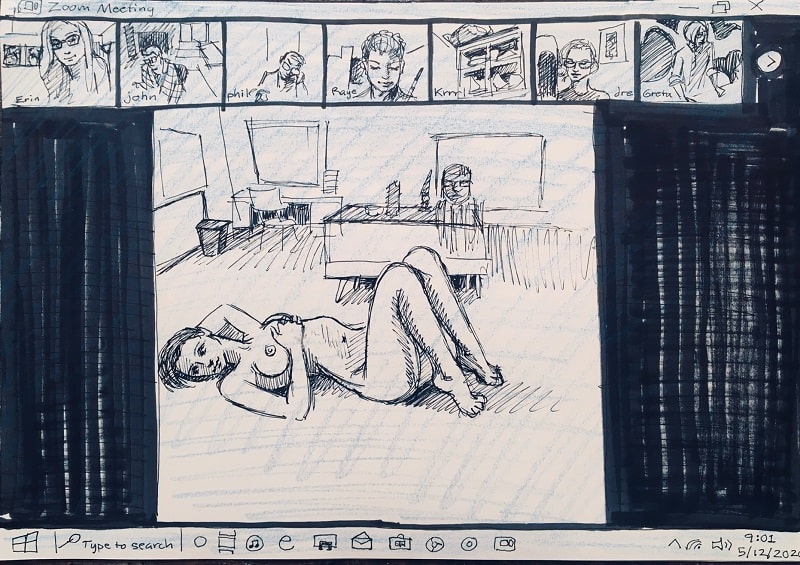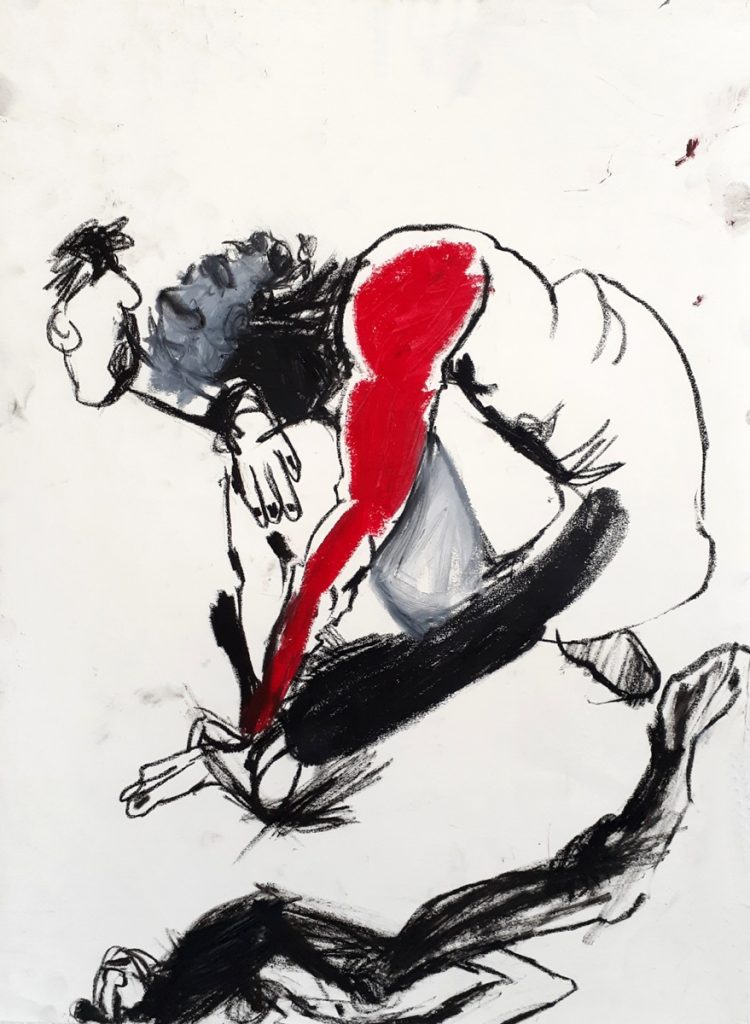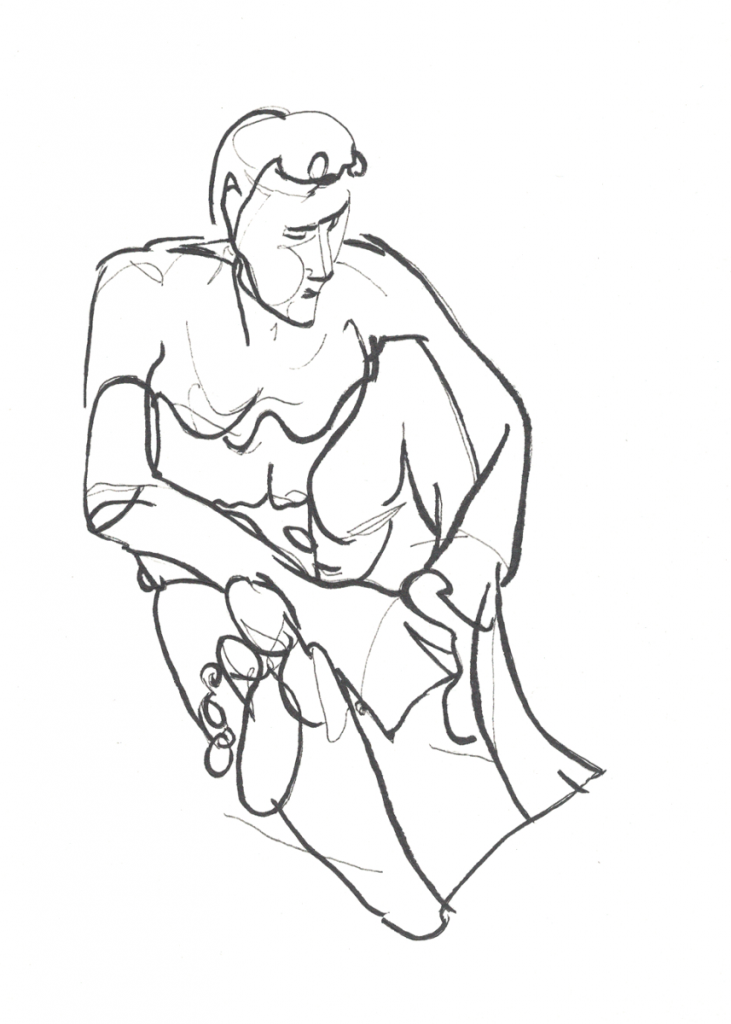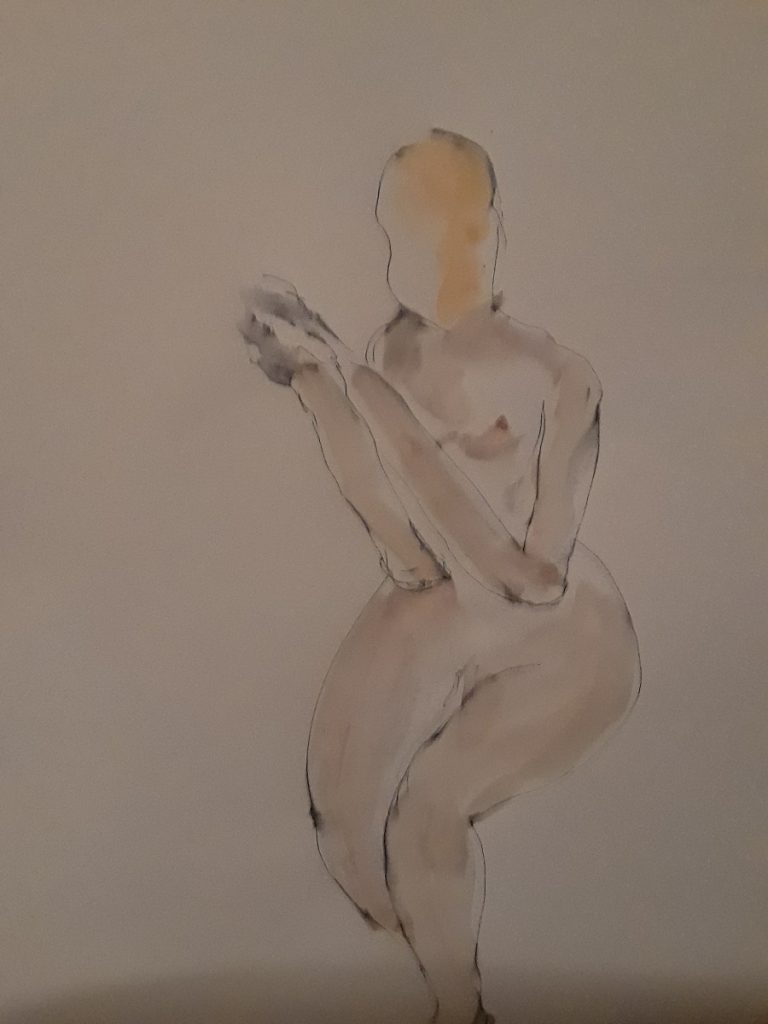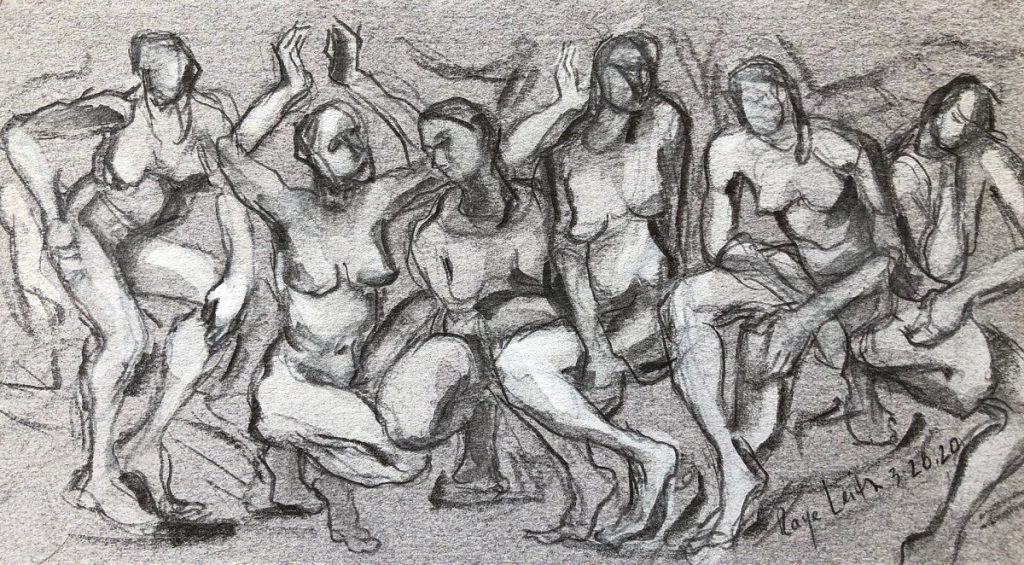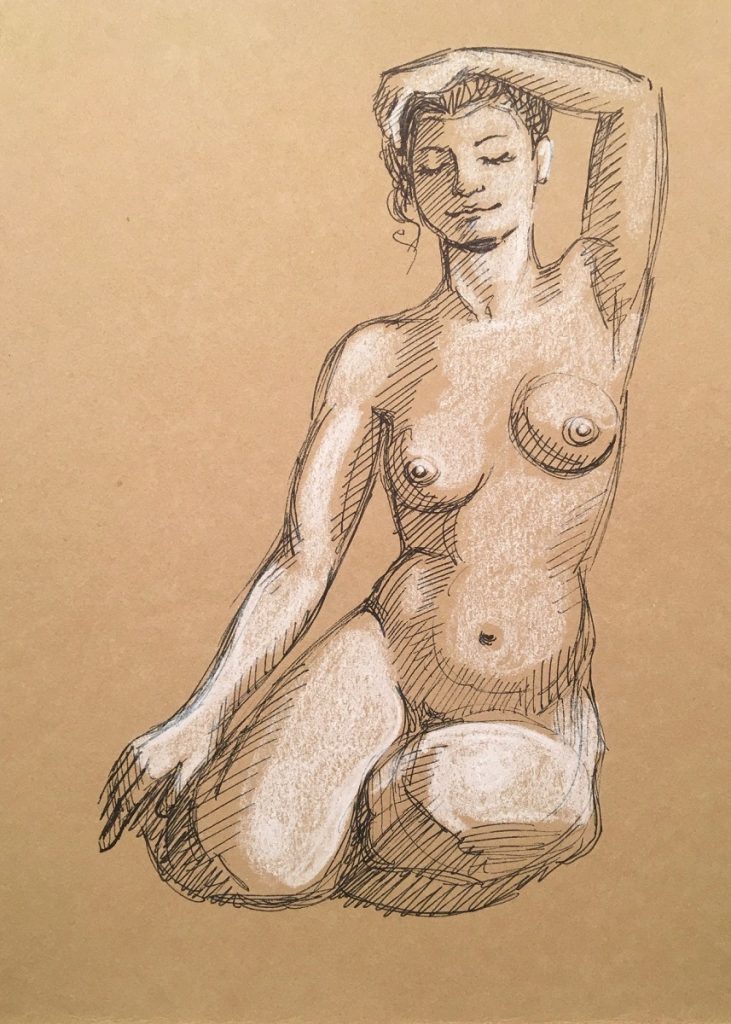Drawing from the live, nude model has been the mainstay of artists at least since the Renaissance, and the tradition has been kept alive in academies that still value the kind of eye-hand coordination that can only come from careful study of the complicated apparatus presented by the human body. Even abstract artists have recognized the value of life drawing, and students still flock to Graham Nickson’s “drawing marathons” at the New York Studio School every summer (except this one, alas).
I was peripherally aware that a number of Santa Fe members of the site met for a weekly drawing class, but I didn’t pay it a whole lot of mind until Pacha Wasiolek let me know they were doing Zoom classes since the onset of the pandemic.
Huh? How does that work? Turns out it’s pretty simple. “The models are provided with a tripod and smartphone attachment,” says Holly Grimm, who started organizing the Zoom group a couple of weeks before the governor’s orders to stay at home. “We work with them ahead of time to discuss lighting. And we’ve been able to get some interesting foreshortening effects by placing the camera low to the ground or high above the head of the model.”
Every Tuesday night, participants tune in via a laptop or an iPad for the three-hour sessions (people can drop in and out during that time). I joined one on a Tuesday evening in mid-May for about 45 minutes to get a firsthand feel. In all there were about ten participants during my brief audit, including several Vasari21 members, Grimm says attendance usually hovers around 14 to 16, with the others joining later.
Adrian Coffey, the model that evening, quickly stepped out of her clothes to assume a series of two-minute poses in a local coffee shop. She’s a lithe, fit young woman who has no trouble holding a kind of yogic one-leg-bent-foot-touching-the-opposite-kneecap attitude that would have me crashing to the ground within ten seconds.I am mesmerized by the halter-like tattoo around her neck, an elaborate “accessory” worthy of Hatshepsut, and would probably spend the evening drawing that if I had the right materials.
After about 20 minutes, five or six quick poses, Adrian takes a break and the participants relax to fill me in on some of the details of Zoom life-drawing. I learn that here is only one model each evening for the Santa Fe sessions, and “virtual drawing” has caught on around the world, with other groups meeting at all hours, if you feel like drawing at 3 a.m. for example. One English cohort boasts about 300 members, and a still life session in Los Angeles offers regular Sunday drawing sessions.
What makes it strikingly different from the real deal, of course, is that everyone has the same view of the model, and you are extracting the essence from a flat screen. “The whole reason to draw from life is to translate a three-dimensional object onto a two-dimensional surface,” says Andrea Broyles, who often joins the group but was not there during my audit. And you do not have the advantage of the living, breathing atmosphere of the studio—the smell of the oil stick, the hushed concentration of the crowd.
“I resisted joining a Zoom life-drawing session for several weeks,” says Raye Leith, who has been with the group since moving from Washington, DC, to Santa Fe 16 months ago. “But then I started having withdrawal symptoms from our regular gatherings—I sorely missed the sharing and camaraderie among artists and models. Once I took the plunge, I came to appreciate the new artistic possibilities available, such as accidental cropping due to the model’s iPhone slipping; foreshortening exaggerated by the fish-eye tendency of iPhone cameras; ever-changing sunsets throwing shards of light and shade over the model.”
A Zoom session also seems a fine way to keep your sanity during this period of self-isolation. I didn’t stay beyond the first portrait session, in which Adrian presented herself to the camera for a seven-minute full-frontal head-and-shoulders pose. But I may be back with a pad and pencil next time.
Other info: Each drawing session costs $10, which covers modeling and Zoom platform fees (any funds left over go to the Santa Fe Artists Medical Fund). If you’re interested in joining the group, contact Holly.Grimm@gmail.com
Top: Erin Currier’s take on a Zoom life-drawing session, pen and china marker on paper, 8 by 12 inches
